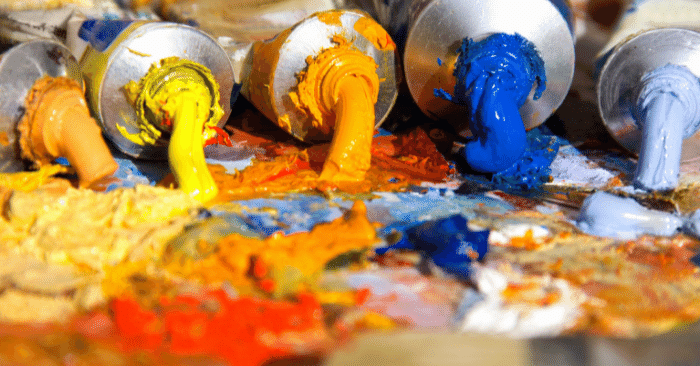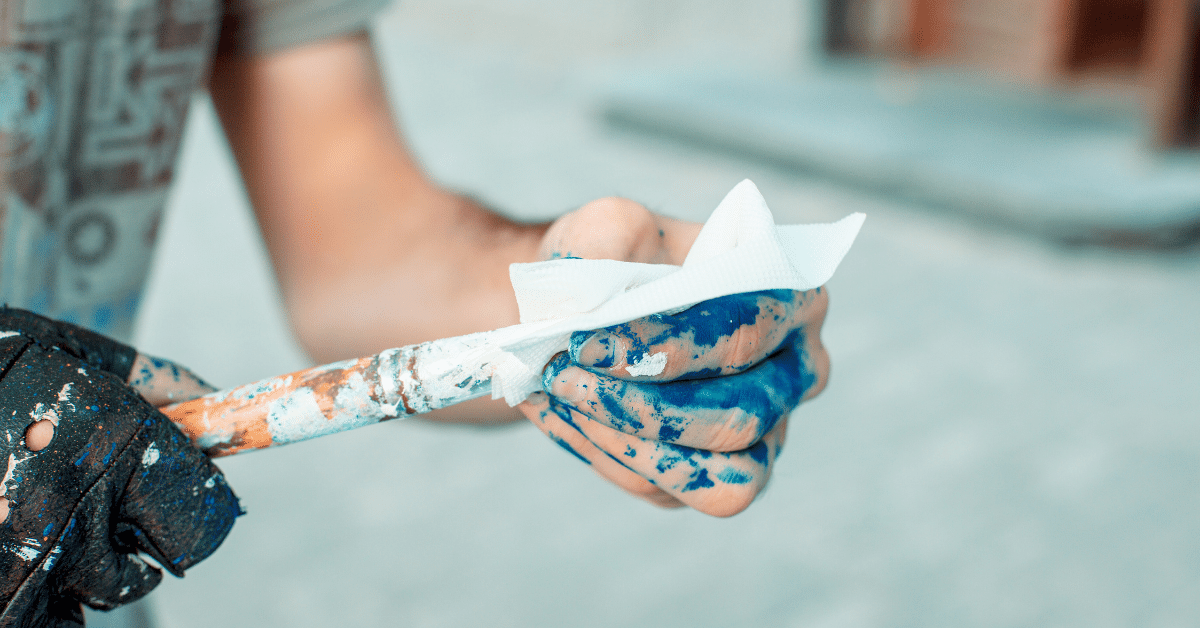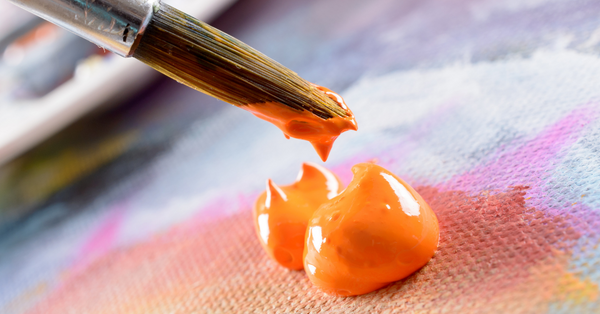
Acrylic paint can be tricky. You think it’s dry because of its appearance on the top layer, but really, it only has a dry film on the top, still too sensitive to touch. Then, you accidentally smudge part of your beautiful new painting. We’ve all been there.
Luckily, there are quite a few tricks you can use to speed up drying time. Keep reading to learn more about the drying process along with seven simple ways to make your acrylic paint dry faster.
TABLE OF CONTENTS
The Acrylic Paint Drying Process
Acrylic paint is a water-based paint. This means it reacts with water, so you can dilute it, mix it, or even blend it.
So, how long does acrylic paint take to dry?
Generally, professional, artist quality acrylic paint in thin layers takes an average of 20 to 30 minutes to dry (even longer for thicker layers).
There are two stages of drying acrylic paint.
The first stage is known as the fast dry stage which means a soft film has formed on top, but it’s still sensitive to pressure. Otherwise known as ‘dry to the touch.’
The second stage is when all the layers of paint are completely dried or cured, all the way through. It is only dry when the water has evaporated completely, which explains why the thickness of paint affects the amount of drying time it needs.
How to Tell if Acrylic Paint is Dry
We know it can be tempting to go in for a quick swipe to check if paint has dried but don’t do it!
Instead, lightly tap your finger on the painting after waiting at least 30 minutes. If the paint is still sticky or moist, you know it has a lot longer to go since the top layer hasn’t even dried yet. If it is dry on top but feels squishy, then it isn’t fully dry.
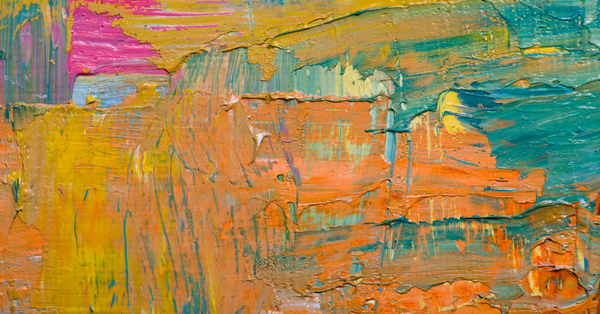
You can also check if the acrylic paint is dry by checking the sheen. Paint that has a wet sheen will dry looking wet and have more shine, while acrylic paint with a dry sheen will look more matte or satin.
However, you can avoid some of this nonsense by trying out one of the below methods to speed up the drying time.
7 Easy Ways to Dry Acrylic Paint Quickly
When using acrylic paint, applying thin, even layers will assure your paint dries the quickest, but there are a few other tricks you can try to speed up the process even further. Follow the tips below to learn how to dry acrylic paint faster.
1. Choose the right surface
Different surfaces can have a major impact on the drying time of acrylic paint. Smooth surfaces, like glass or metal, allow the paint to dry faster because they provide a more even and consistent area for the paint to lie on, and the paint is less likely to stick to the surface.
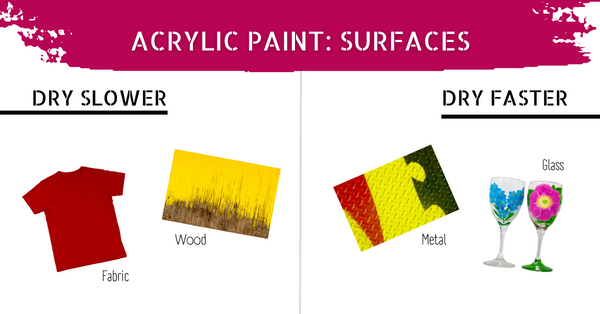
On the other hand, rough surfaces, like wood or fabric, absorb more paint and hold the moisture in for longer. This is because the rough surface provides a more uneven and inconsistent area for the paint to lie on, and the paint is more likely to stick to the surface. Additionally, the porous nature of these surfaces increases the drying time because the paint must penetrate the material in order to dry.
That being said, if you’re concerned about drying time, try to use a flat, smooth surface. This will speed up the drying process significantly. If you are using a more absorbent surface, go for thin layers instead of thick layers.
2. Choose the right acrylic paint
The type of acrylic paint used will have a considerable impact on the drying time of the paint. For instance, some types of acrylic paints are made to be quick-drying, while others may take up to 24 hours to dry fully.
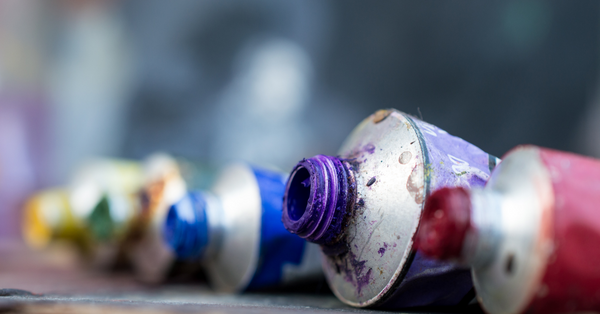
This is because different brands of acrylic paint contain different levels of binders, which are what give the paint its adhesive properties, and therefore its drying time. The amount and type of binder used will also affect the opacity and color of the paint, which is why it is important to choose the right type of paint for the project.
There are several acrylic paints which are well known for their fast drying qualities including:
- Golden
- Liquitex
- Matisse
- Sennelier
- Daler-Rowney
- Utrecht
- Amsterdam
- Maimeri
- Tri-Art
- Winsor & Newton Galeria
- etPaint
Also, keep in mind that all acrylic paints are most effective when applied and dried in a warm room with low humidity.
3. Paint in thin layers
Applying thin coats of acrylic paint is the simplest (and presumably least expensive) way to speed up drying time. This is inexpensive not just because you don’t need to buy an aid like a hair dryer, but it’s also inexpensive because you use less paint, which helps you save money.
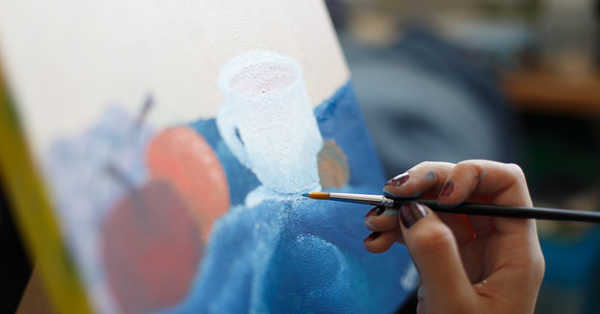
After 30 minutes, heavy layers of acrylic paint may feel dry to the touch, but underneath, a wet mess will still be present. The paint underneath needs more time to dry because only the top layer has been exposed to air.
To use this method effectively, dab the brush on the paint and wipe off any excess on the palette before placing the brush on the canvas. This allows you to reduce the amount of paint you use. You can always add more paint to the canvas if the paint doesn’t spread well, but the paint will be difficult to remove once applied.
Start with less and add more as needed. Remember to add more layers if it looks too thin and patchy.
4. Use a heat lamp
Using a heat lamp is an excellent way to dry acrylic paints quickly, especially in areas with less ventilation. But, let’s not go too crazy.

Don’t put your art piece directly under the lamp at any point. Instead, keep it about three feet away. The heat lamp is used to warm the air in the room to increase the drying time.
If the paint is too close to the high heat, then the paint will bubble and burn. We recommend using a hair dryer over the heat lamp method because a hair dryer has a lower heat setting and provides better air flow.
5. Use a hair dryer
Similar to the heat lamp, a hair dryer is a great method because the heat combined with the airflow provided by the hair dryer helps speed up the drying process of acrylic paint.

Acrylic paint can be heated to dry but should not be exposed to direct heat. Instead, keep the hair dryer about 20-30 cm away from the painting, leaving enough space between the hot air from the hair dryer and the paint.
Hair dryers are also highly effective for drying in spaces where humidity is present. Hair dryers are easy to handle and work with. Use the temperature settings like you would for your hair to adjust the heat and airflow to keep the pigments damage-free.
6. Use a fan to produce airflow
Your working environment has a great influence on the drying time of a painting.
The first environmental factor affecting the dry season is air circulation. In an ideal world, you work in a room with a ceiling fan. Ceiling fans can provide good circulation while preventing direct airflow from hitting your painting.
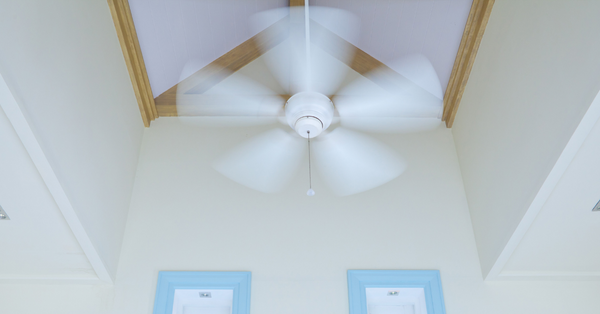
If your paint room doesn’t have a ceiling fan, try opening a window. A natural breeze from outside helps provide sufficient circulation to speed up the drying time of acrylic paints.
If you don’t have a ceiling fan or window in your painting space, don’t worry. You can still improve airflow. Try purchasing a simple oscillating fan to increase circulation in your painting studio. Place it in a corner, set it to rotate the head to bring proper airflow throughout the room.
Don’t place a fan next to or in front of the painting. Just like with too much heat, too much direct air flow can crack the paint.
7. Don’t mix in mediums
Avoid adding paint mediums to acrylic paints as a final strategy for accelerating drying.
Some materials, such an acrylic paint retarder, are made to help paint dry more slowly. These are fantastic if you require more time to mix your paint layers before they dry, but they will obviously work against you if your objective is a quicker drying period.
Despite not being intended to slow down paint drying, other mediums can nonetheless have the same effect. If you’re aiming for a quick dry time, your best strategy is to avoid using paint mediums entirely because you won’t know what impact they will have until you try them out.
Key Takeaway
Although acrylic paint dries quicker than other types of paint, it can still be incredibly time-consuming if you need multiple or thick layers. Luckily, the tips above are simple ways you can try to speed up the process, so you can go start on your next project sooner.
However, keep in mind that too much heat, light, or direct air can damage your piece. Always use your best judgment and try to be patient.

